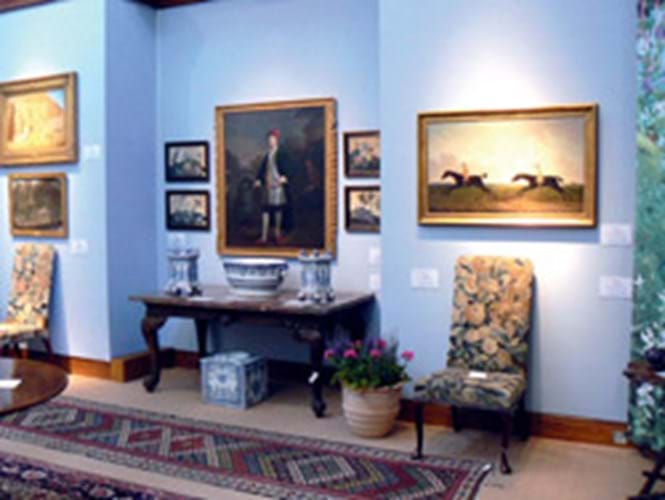
Sainsbury, scion of the famous retailing family, who died in 2006, was a true amateur d'art and generous cultural benefactor. Along with substantial bequests to major UK museums, the proceeds of this auction were destined to benefit The Monument Trust, the charity he established.
The collection was built to furnish and complement Woolbeding House, the Georgian home that Simon Sainsbury leased from the National Trust. It was this, plus his personal taste, that determined its distinctive nature: understated English Georgian furniture, British pictures and arguably the biggest and best collections of English delftware in the country.
Dubbed an English Arcadia, it was a particular country house look that Christie's did their best to recreate in the King Street saleroom for the viewing last week.
The event drew a substantial crowd although the room was not packed, perhaps because, with the high season in flow and the Grosvenor House fair still in full swing, there was a lot of demand on time. The furniture trade presence was relatively thin, although they no doubt had a presence via the two banks of telephone bidders who dominated much of the auction action.
By contrast, the small band of delft dealers, their clients and other private collectors who are active at this top end of this market, were there in person and busy providing a welcome antidote to the telephone bidding.
Buying was, said Christie's, predominantly private, whether it was trade acting for clients or collectors bidding in person.
The sale produced a slew of strong prices, records for artists, cabinetmakers and classes of furniture. But not everything flew. There were some patches where demand faltered for the delftwares and some higher estimated pieces of furniture either failed to get away or went some way below estimate.
This may be a reflection of the economic climate, but more probably of estimates that were a little too aggressive and, in the case of the delftwares, the sheer volume offered in a narrow market.
But any sluggishness in some quarters was balanced by much higher than predicted prices in others.
Cases in point included the Paul Nash oil on canvas of 1936 Encounter in the Afternoon, which proved to be the surprise sale leader.
Bidding, principally from the room, took it way past the £120,000-180,000 estimate before a telephone bidder chipped in to secure it at £800,000, a record for the artist.
The most expensive piece of furniture was classic Sainsbury taste, a late George II mahogany side table set on six square profile legs carved with purest neoclassical acanthus and bell flower motifs. Competition for this blue-chip example of early Georgian cabinetmaking was exclusively telephone-based and the hammer fell to one of their number, described as a European advisor, for £720,000.
This was more than six times the £115,000 paid by London dealers Partridge (from whom Sainsbury acquired the piece) at Christie's 1991 Samuel Messer auction, another benchmark sale for top-flight Georgian furniture.
Similarly a Mayhew and Ince attributed commode of c.1773-5 in finely figured veneers of fustic, wenge and mahogany, commissioned for Burley on the Hill, commanded a double-estimate £570,000 from a British dealer on the phone. This is a new high for a piece by this cabinetmaking partnership.
A pair of mahogany hall chairs by William and John Linnell, c.1760, of the monumental proportions associated with this form of seat went to a private buyer for £380,000, just under the lower end of a broad and bullish £250,000-400,000 estimate, but a new record for a pair of hall chairs nonetheless.
But a substantial mahogany library desk attributed to Thomas Chippendale got away at £140,000, substantially shy of an equally broad £200,000-400,000 estimate, and a ten-piece suite of mahogany seat furniture commissioned by Sir Lawrence Dundas for Moor Park or his London home was one of the furniture casualties, bought in at £130,000 against predictions of £250,000-400,000.
The most expensive piece of Simon Sainsbury's delftware at £90,000 proved to be an impressive and early 13 1/2in (34.5cm) London delft charger produced c.1630 at either Pickleherring Quay or Montague Close and painted to the centre with an armoured warrior.
This was acquired from Jonathan Horne in 1999 and the London dealer bought it back here after a swift bidding battle against the London's other main pottery dealer, Gary Atkins.
With Simon Sainsbury's French paintings (which are to be included in Christie's Impressionist and Modern auction this week) still to sell, the Sainsbury property should easily achieve its projected total of £15m.
By Anne Crane




